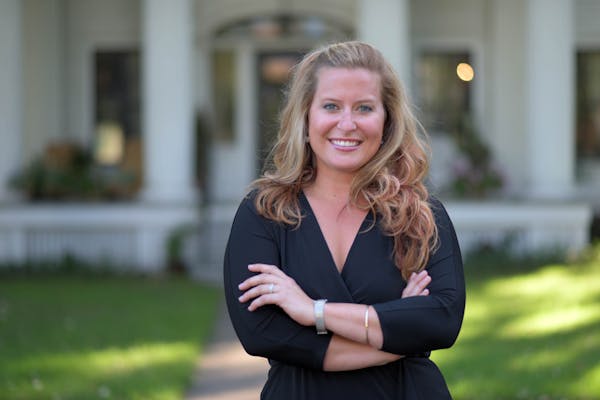To the preservationists who lobbied the St. Paul City Council, held all-night vigils to fend off demolition crews and rallied community support to save the historic Justus Ramsey House, the home's disassembly was a better outcome than its planned destruction.
But not by much.
"I feel bitter," said W. 7th St. neighborhood resident and local historian Jim Sazevich, who for months fought the owner's plan to raze the 1852 stone cottage. "I have never been so bitter in my life."
St. Paul's oldest stone house is now a pile of limestone bricks, piled on pallets at an undisclosed location and waiting to be reassembled at an undetermined cost. But the W. 7th-Fort Road Federation and other groups are hoping to foster its rebirth sooner than later.
The federation is requesting proposals for the reconstruction of the Justus Ramsey House, asking those who would restore the stone cottage to submit a letter of intent by July 21. Full proposals will be due Sept. 29, and one will be selected the week of Oct. 16. According to the federation website, the plans must be in accordance with U.S. Secretary of the Interior standards and include a plan for long-term stewardship and financing.
The house's disassembly, brokered by community members and the City Council as a way to prevent its destruction, was not what the community really wanted, said Julia McColley, executive director for the neighborhood federation. The hope now is that the building's history and relevance can be preserved at another site.
"We are aware it's not going to be reconstructed exactly as it was," she said. "But we want the story to be told."
In January, the council, acting as the Housing and Redevelopment Authority, authorized spending $84,000 to preserve the building until it can be reassembled. That amount later was reduced by $50,000.
For more than 170 years, the cottage — built by the brother of Minnesota's first territorial governor, Alexander Ramsey — stood as the street around it changed. In the end, it was on the patio of Burger Moe's restaurant where owner Mojtaba Sharifkhani wanted it gone, saying it was water damaged and a hazard to staff and patrons. City inspectors and Mayor Melvin Carter agreed, supporting Sharifkhani's request for a demolition permit.
Instead, its bricks were catalogued and moved. Despite being listed on the National Register of Historic Places and two local historic registries, the cottage is gone — a massive American flag hanging in its place on the Burger Moe's patio.
Carol Carey, executive director of Historic St. Paul, said there are many champions for the home's resurrection in the community, and many visions for what that might look like.
"There is definitely an interest in seeing the property reconstructed in a way that can convey its character," she said. "There is also a real strong vein of interest in telling the story behind it."
What makes the Justus Ramsey House worth preserving is not just the name of its first owner, she said, but the lives that were lived there in the decades that came later — the railroad porters and shopkeepers and barbers, members of St. Paul's early Black community — and also a couple of men who lived there as "partners," according to census records.
Frank White, another local historian who helped unearth the cottage's decades as a home for Black families, said it shows the importance of the Black community in the growth of St. Paul. Before the Rondo neighborhood, this area near the Upper Levee was where most Black residents put down roots.
"As much as we want to retain Rondo's history, this history is necessary to tell the larger story about St. Paul," he said.
Like many others, White said he thinks proposals to rebuild the cottage in the W. 7th neighborhood should be given priority.
Sazevich, though, worries that the best way to tell the Justus Ramsey House's story has been lost. While there is no record of what it looked like inside, its exterior, at its original site, could have told a more complete story. Rebuilding it as a private residence or office, without details of its historic context, will do nothing to fix that, he said.
But there is one way to make it better, he said.
"That house today, or what is left of it, should be reconstructed on the lot behind the [Alexander] Ramsey House. We're talking not even a full city block from the original site," Sazevich said. "If they did that, I don't care if they use it for storing the lawn mower."

Widower sues Ulta, claiming salon denied late wife use of her service dog

Expect clearer air this summer in Minnesota, thanks to a milder wildfire season

Softball coaches cite gender equity in push to move state finals to U

